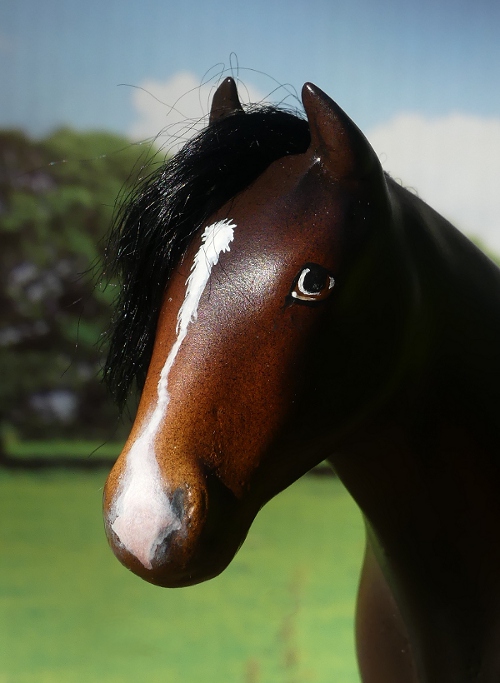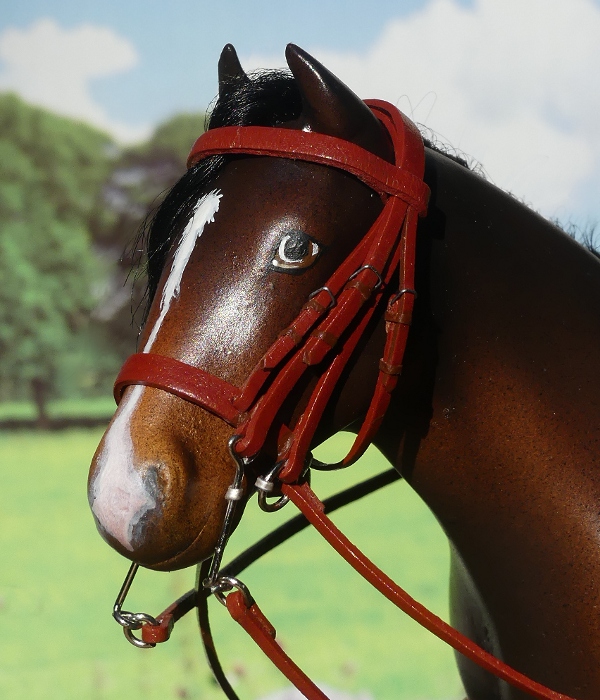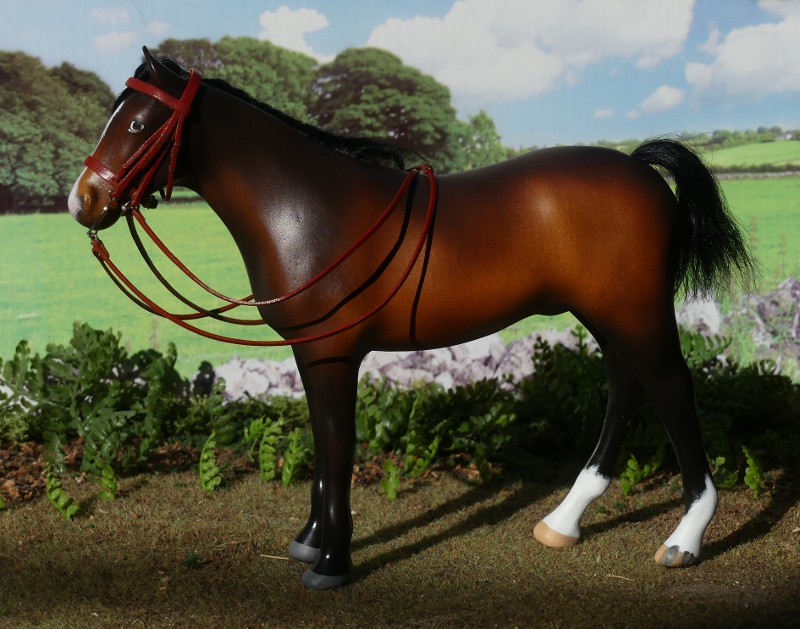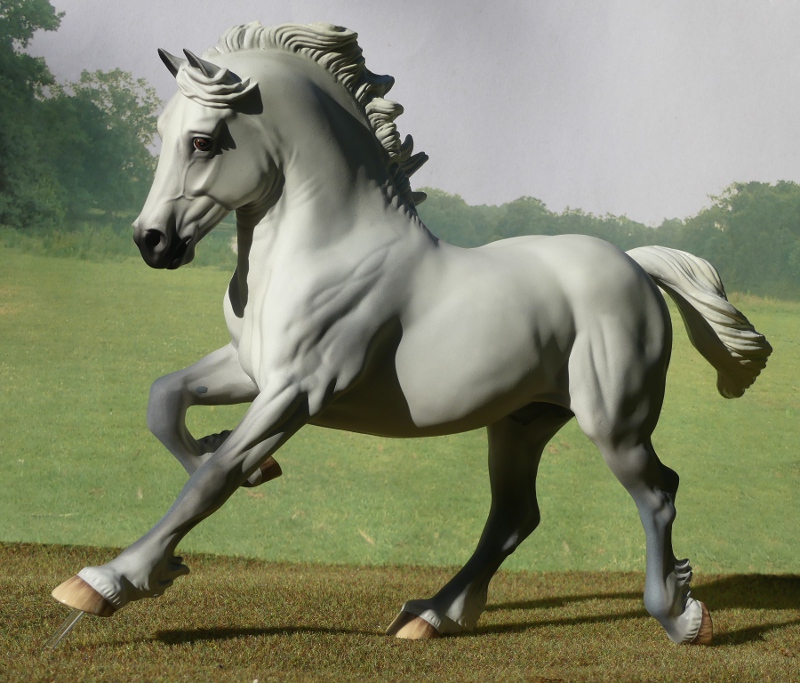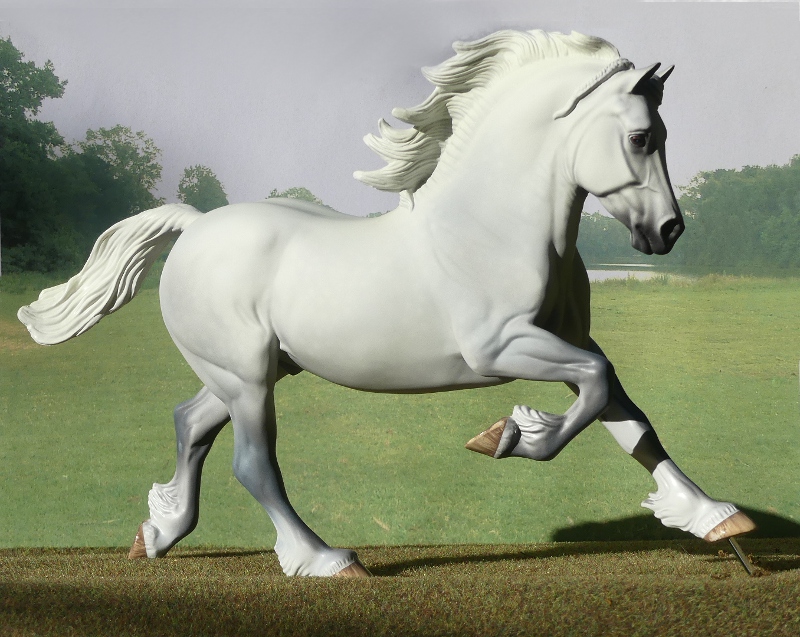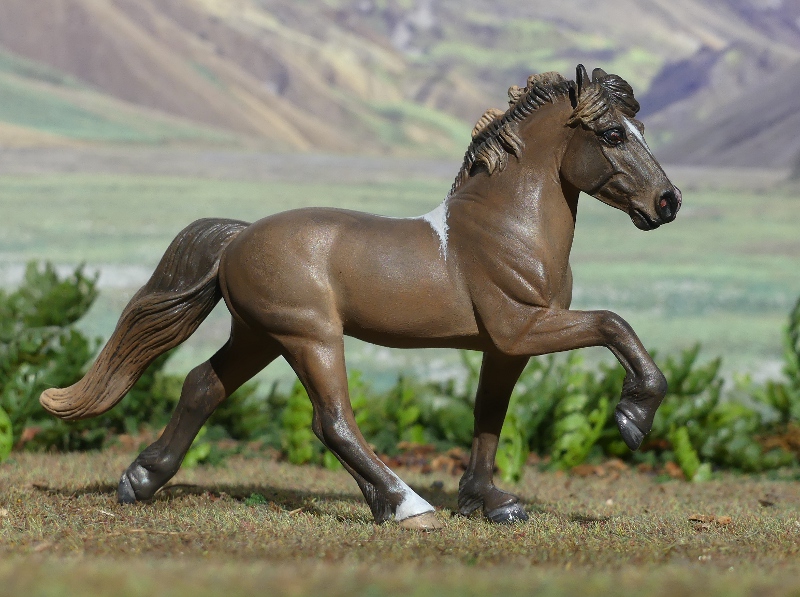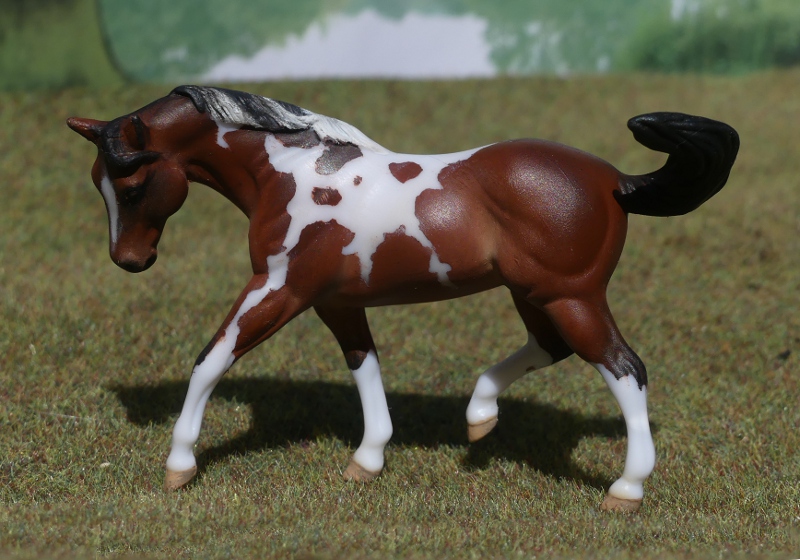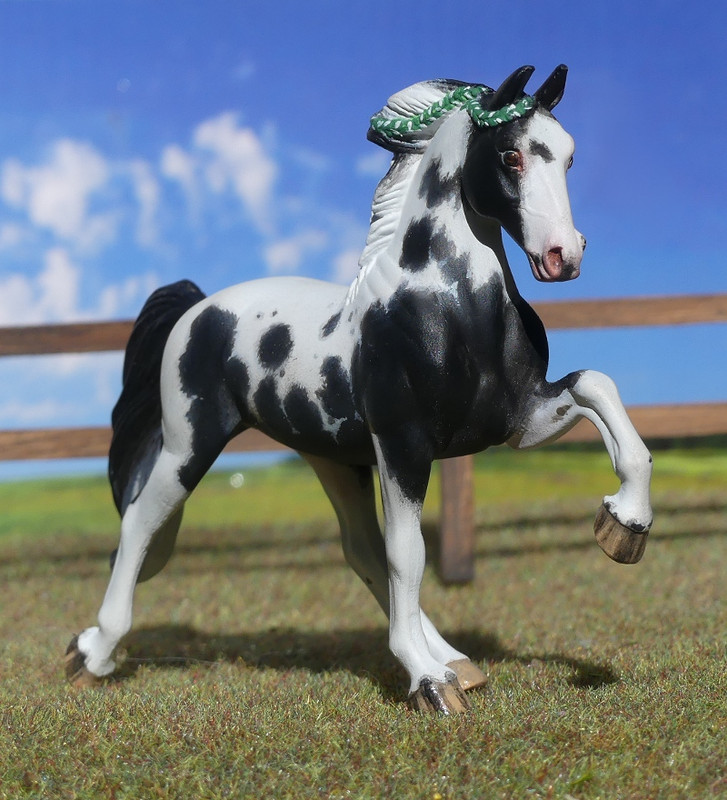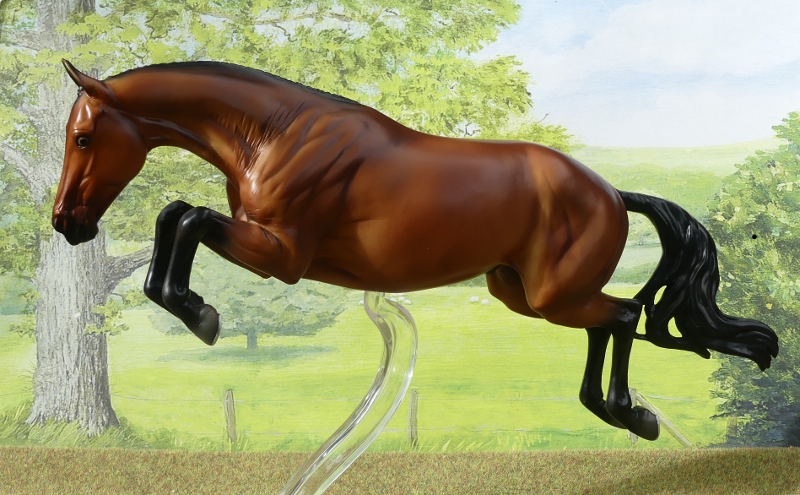Horatio is a fictional 1910s hunting horse from my own writing and illustration. He can be a bit of a character, and a right handful to handle on the ground, but he has a spectacular enthusiastic jump, and is a very keen and sure-footed horse cross country in just about any conditions. Here's a few of the pictures he's been in over the years...
I've been drawing him since 2011 and always thought I'd need a Julip eventually, but never got round to ordering one as a portrait. I'd been kind of hoping I might be able to pick up a bay of the right colour on the TB mould as a spare, then adjust the markings myself, if I waited long enough and was lucky enough, but it never did happen.
Last week, this stunner of a hunter popped up second hand on ebay, and I immediately forgot all about the preferred TB mould because this one had the makings of the perfect Horatio.
He had a very tiny white star, and no socks, which meant I could easily add on the right markings. He also had a full length tail, and I admit it was so lovely I didn't have the heart to chop it off for the historically accurate bobbed tail of the era - instead I carefully popped out his whole tail unharmed, and made him this short one with some spare black mohair. The original tail is safe in a plastic bag, and because I didn't use any glue in attaching this one, they can be swapped at will - if he does any showing, he can wear his long tail for the breed classes!
Here's his distinctive kinked stripe with a pink nose, carefully copied from his drawn version but trying to keep to a 'Julippy' style, so he looks as if he could've been a factory-finish order and not look out of place with the rest of my herd.
Another side-on view. The first few pictures of Horatio had a smattering of dapples, but at some point I accidentally forgot this while colouring him, and for the last few years (I draw him going out on the Boxing Day Hunt every winter) he hasn't had any! This may've started out as a mistake in my artwork, but at least it means the model's accurate, and I'm not wishing I'd waited for a dapply one. I think the hunter mould genuinely does suit him better than the thoroughbred I'd had in mind, too, it's much more chunky and rounded, where the TB tends toward being lean and leggy and very narrow in the body.
I made him a headcollar with this really nice antiqued leather I got on ebay, it's given an aged colour treatment, smoothed edges, and with a bit of bending between your fingers it softens up beautifully too. It's too wide for bridle leather (and you can't cut it down narrow because you'd lose the colour and roundness of those antiqued edges) but ideal for headcollars, and I'll be able to use it for Horatio's rug and surcingle buckles, too, as he's from the era where those were leather straps, not modern nylon webbing. And yes, in his day, headcollars did have browbands!
And the creativity didn't stop at the halter, in the wet-weather wait between his arrival and getting his pictures taken, I also made him a bridle.
Here's a closeup, again this was leather lace from ebay, and it's a good flat, crisp quality to work with, though their 'tan' turned out to be quite red! Unlike the antique brown, this lace can be cut narrower for the thinner straps; here the browband, noseband, and headpiece are the original 3mm width, while the rest of the bridle parts had to be sliced in two lengthways with a scalpel and ruler, then the edges painted in to match. The bits are made of paperclips bent to shape, with a little blob of tinfoil rolled round for the ends of the mouthpieces.
Harpley Horatio - I'm delighted to have added him to my herd at long last, he's been on my wish-list for such a long time it's hugely satisfying to look up and see him on my mantelpiece!





